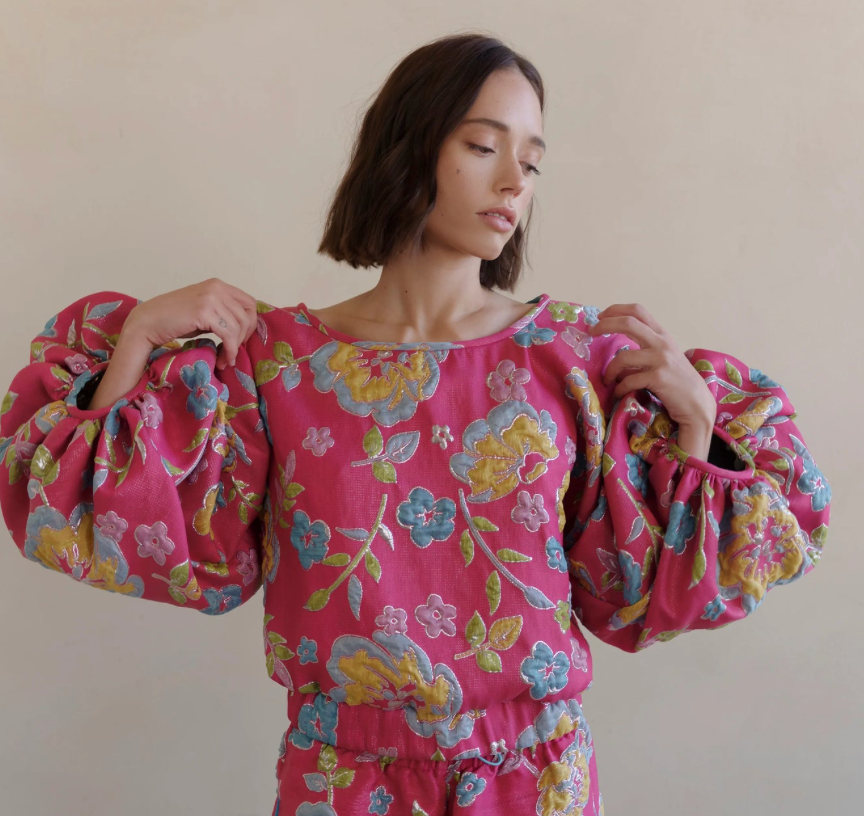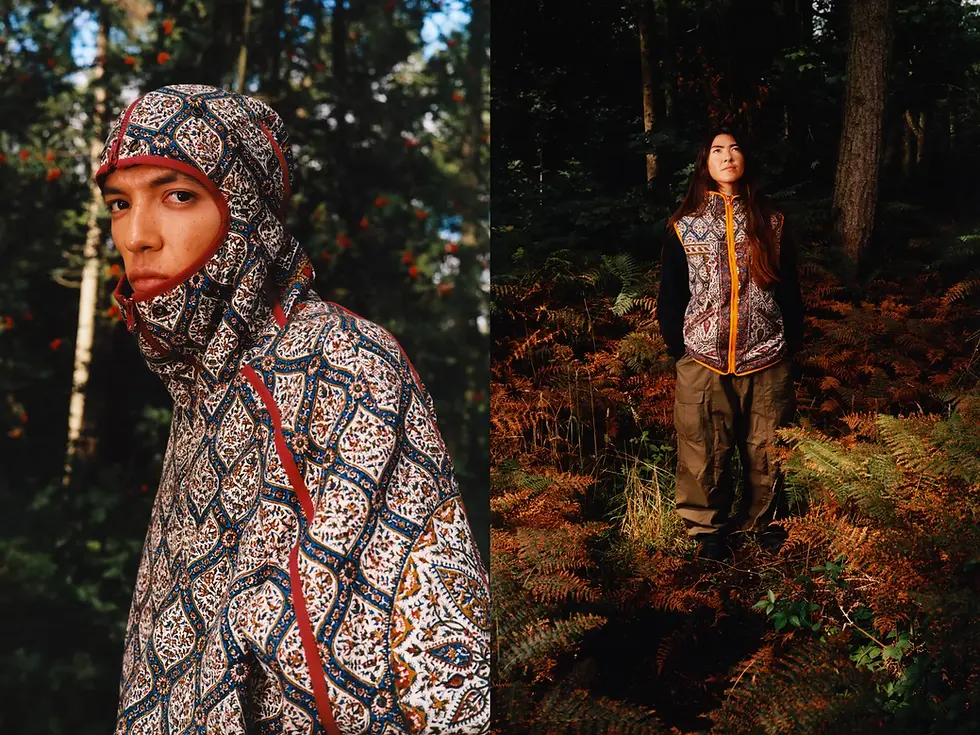Cultural Localism: How Hyper-Local Identity is Reshaping Fashion
- Jun 15
- 5 min read
Updated: Jun 22
As consumers navigate cultural flattening, algorithic sameness and climate instability, fashion is fragmenting into hyper-local identity systems.
The End of Global Sameness
For decades, globalisation promised fashion universality—a shared aesthetic language of streetwear drops, viral collabs, and high-low mashups accessible from Tokyo to Toronto. But in 2026 and beyond, that promise is fracturing.
Fashion consumers—particularly younger generations—are actively rejecting the global sameness served up by algorithms, fast-fashion platforms, and AI-generated styling.
Instead, they’re turning toward hyper-local, culturally specific fashion narratives that feel grounded, precise, and deeply personal.
This emerging movement—The Cultural Localism Shift—is not about nostalgia or nationalism. It’s about micro-belonging, cultural specificity, and a desire for garments that hold intimate geographic and historical meaning.
In an era of planetary instability, consumers are choosing to anchor themselves in place.
Why Cultural Localism is Rising
Algorithmic Homogenisation Fatigue
With AI and social media amplifying endless iterations of the same aesthetics, consumers are craving distinctiveness that cannot be scraped or replicated. Hyper-local style codes offer a form of algorithmic resistance.
Algorithm-resistant garments rooted in place, not trend
Consumers seek pieces that feel uncopyable, deeply contextual, and knowledge-coded
Climate-Driven Regionalism
As climate volatility disrupts global supply chains, consumers are becoming more aware of proximity, resource security, and environmental impact. Hyper-local production feels both ethically grounded and practically resilient.
Emphasis on local fibres, regenerative agriculture, and short-supply-chain craft
Consumers supporting makers who are directly impacted by climate shifts
Identity Fragmentation and Cultural Reclamation
As global identities feel increasingly fractured, younger generations are actively reclaiming cultural, regional, and ancestral roots as a form of fashion sovereignty.
Indigenous craft revivals, diaspora fashion, and folkloric references gain new relevance
Consumers are prioritising authenticity over generalised multiculturalism
“I don’t want to dress like the world. I want to dress like my world.”
Fashion Expressions of Cultural Localism
Micro-Regional Storytelling
Fashion is becoming a form of cultural journalism—where each piece carries a story tied to geography, tradition, and ecology.
Garments that reference local textile histories (e.g. Harris Tweed, Bengal muslin, Andean alpaca weaving)
Collections centred on place-specific narratives rather than seasonal trends
Brands openly educating consumers on materials' origin, maker histories, and land connections
Design Cue: Collections built as regional moodboards, not trend moodboards.
Hyper-Local Collaborations
Global brands are moving beyond typical celebrity or designer collabs into deep, place-rooted partnerships with local artisans, communities, and indigenous makers
Luxury houses collaborating with regional dye masters, weavers, or embroidery guilds
Cross-pollination between advanced design houses and protected cultural craft forms
Ethical Imperative: Partnerships must go beyond surface appropriation into genuine, reciprocal value-sharing.
Place-Based Scarcity
Scarcity is increasingly tied to geography. Accessing certain brands, materials, or makers requires knowledge, travel, or cultural literacy—not just budget.
Garments produced in micro-limited editions, often sold only within region
Cultural “insider knowledge” becomes a status marker for fashion consumers
Regional boutiques and traveling trade fairs regain relevance
This underground influence model values insider knowledge, not mass visibility. It's about belonging to a niche, not building a following.
Design cue: Build intentional geo-limited drops that reward hyper-local engagement.
Brand Case Studies: Leaders in Cultural Localism
1. Story mfg (UK/India)
Story mfg. fuses regenerative Indian craft with UK-based design thinking. Hand-dyed, handwoven, and slow-made, their pieces feel personal to both maker and wearer.
Why It Works:
Radical transparency in supply chain
Place-rooted materials (indigo, madder, organic cotton)
Non-seasonal collections built around process, not trend cycles
Key takeaway: Build emotional resonance through process visibility and regional material narratives.

2. ELMY (USA / Native American-Owned)
ELMY works with Native American artisans to create garments rooted in indigenous weaving, beadwork, and symbolism, blending contemporary shapes with protected cultural forms.
Why It Works:
Authentic creator-led storytelling
Ethical control of cultural representation and profit share
Deep regional connection to land, ecology, and community
Key takeaway: Authenticity cannot be outsourced. True localism requires community-led production models.

3. Paria Farzaneh (UK / Iranian Diaspora)
British-Iranian designer Paria Farzaneh integrates Persian heritage, ancestral motifs, and diaspora narratives into streetwear and functional silhouettes.
Marries global silhouettes with culturally specific storytelling
Prints, calligraphy, and symbols drawn from personal heritage
Avoids tokenisation by deeply embedding narrative into design
Key takeaway: Use personal heritage as a source of new design language, not simply aesthetic borrowing.

Strategic Takeaways for Fashion Brands
1. Shift from Global Homogenisation to Place-Based Differentiation
Stop flattening design into global trend templates. Build collections rooted in micro-cultural narratives.
2. Partner With Cultural Stakeholders, Not Just Craftspeople
Collaborate with educators, elders, historians, and activists to build narrative integrity alongside design innovation.
3. Build Hyper-Localised Scarcity Models
Geo-limited drops, region-specific releases, and on-location shopping experiences will build cultural capital and consumer loyalty.
4. Treat Heritage as Dynamic, Not Static
Approach cultural localism as a living, evolving design source—not as a museum piece.
Understand Localism As Climate Strategy
Shorter supply chains, regenerative regional materials, and local production reduce carbon impact and appeal to eco-driven consumers.
Global Fashion is Breaking into Micro-Worlds
In 2026-2027, fashion’s power centres are decentralising. Influence no longer radiates outward from Paris, Milan, or New York—it emerges in thousands of hyper-specific, culturally rich style ecosystems.
For brands, this is a call to deepen, not widen. To move closer to communities, closer to land, closer to real stories.The future isn’t uniform. It’s fragmented, place-rooted, and knowledge-powered.
Next Steps: Uncover how these global shifts are translating into trend direction.
BUY OR JOIN US,
YOU DECIDE
Trend Suite offers you the flexibility to choose between buying our reports on-demand or unlocking them all with a membership plan. We believe every creative deserves access to high quality fashion trend forecasting, enabling them to lead, not follow.
Trend forecasts are available to purchase individually, or are included in our Trend Suite Membership plan. Unlock immediate access to every trend forecast, cad library and a suite of tools and resources by joining us.
UNLOCK VISIONARY MEMBERSHIP
Our trend hunters delve deep into global trends, identifying the patterns, movements and design directions that are shaping our changing world. We deliver these key insights through a compelling library of fashion trend reports for your brand to access.
SAMPLE FREE TRENDS
Get a Free Spring Summer 2026 Trending Colours Forecast
In a world where fashion, design, and branding are always evolving, the right colours can make all the difference.
Whether you’re a designer, marketer, or trend enthusiast, staying ahead of the season’s palette is key to crafting collections that resonate and captivate.
That's why we’re excited to offer you our exclusive free trend report, showcasing the Top 5 Trending Colours for Spring Summer 2026











